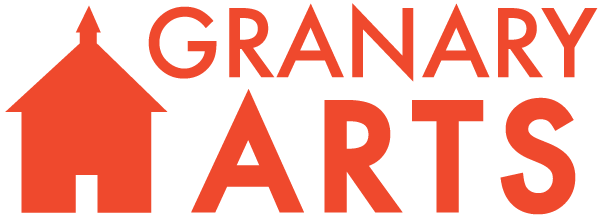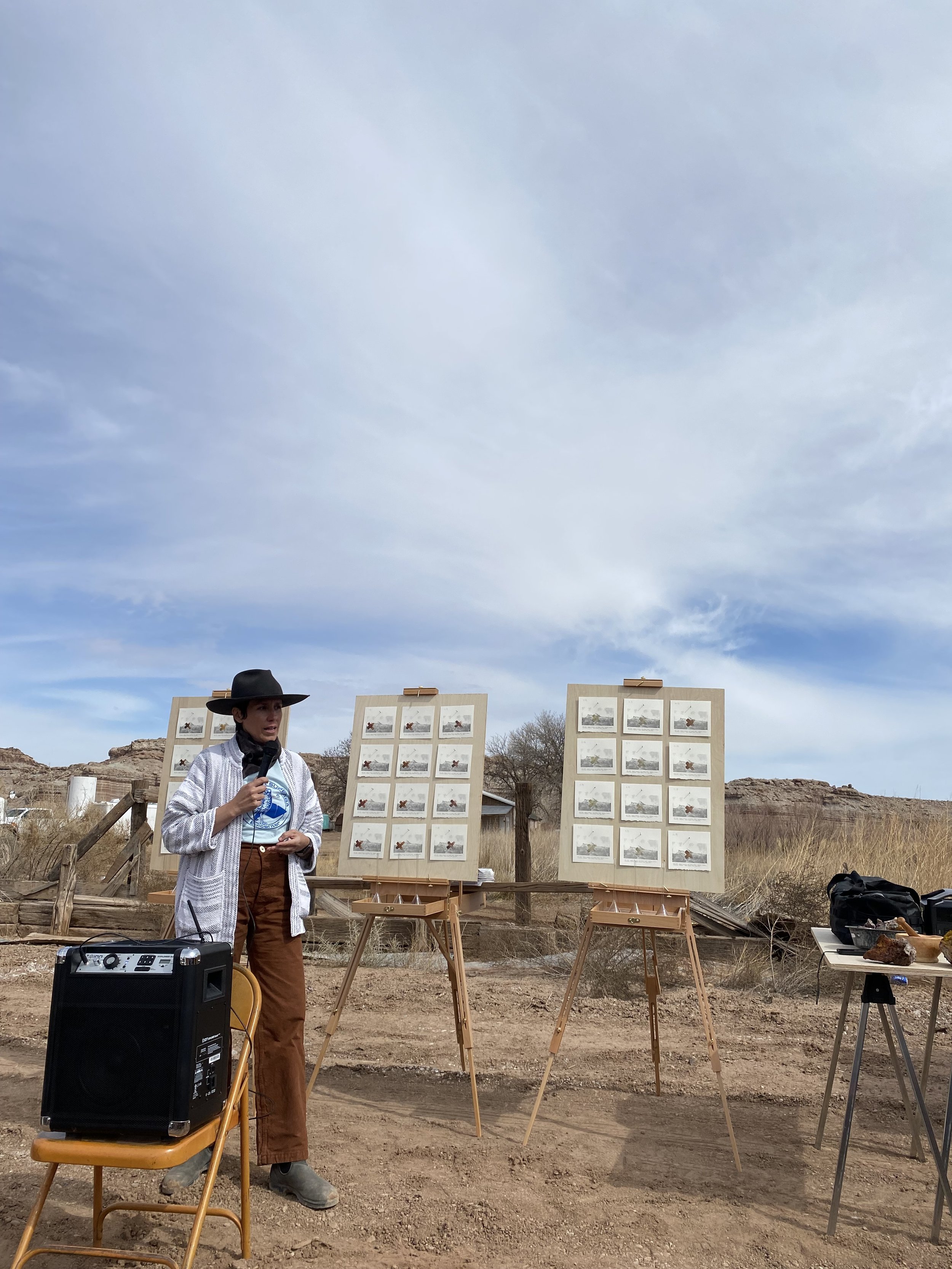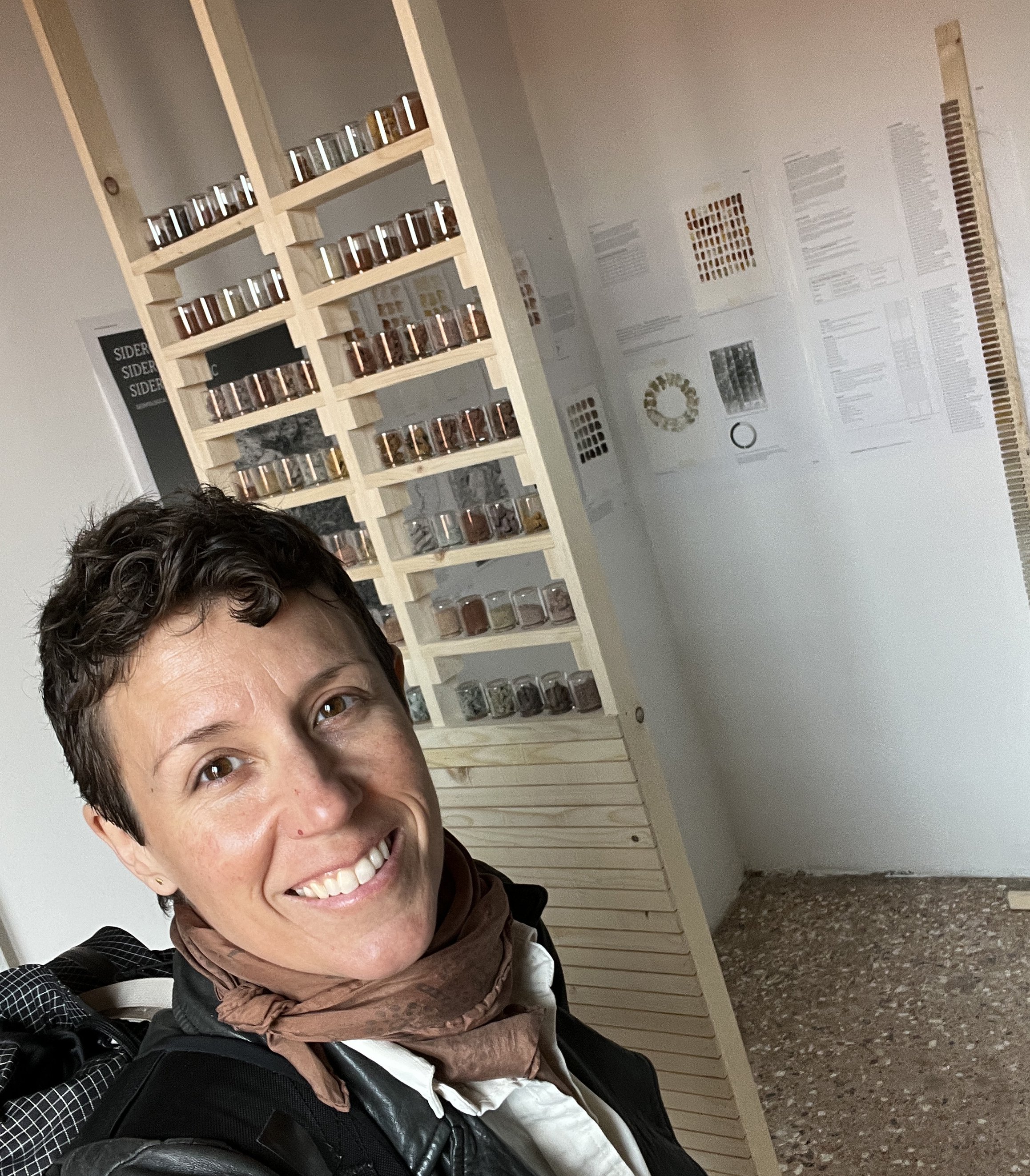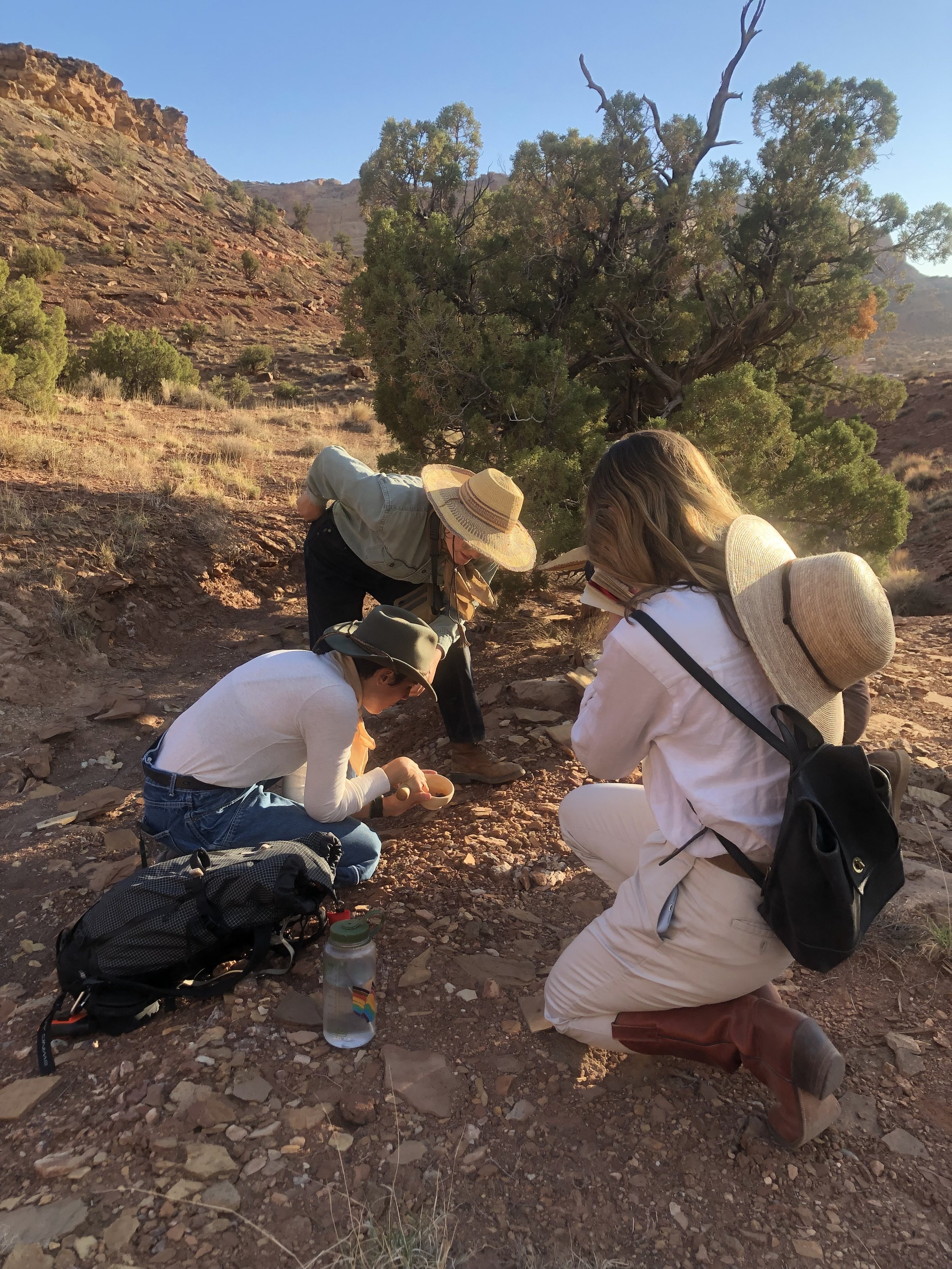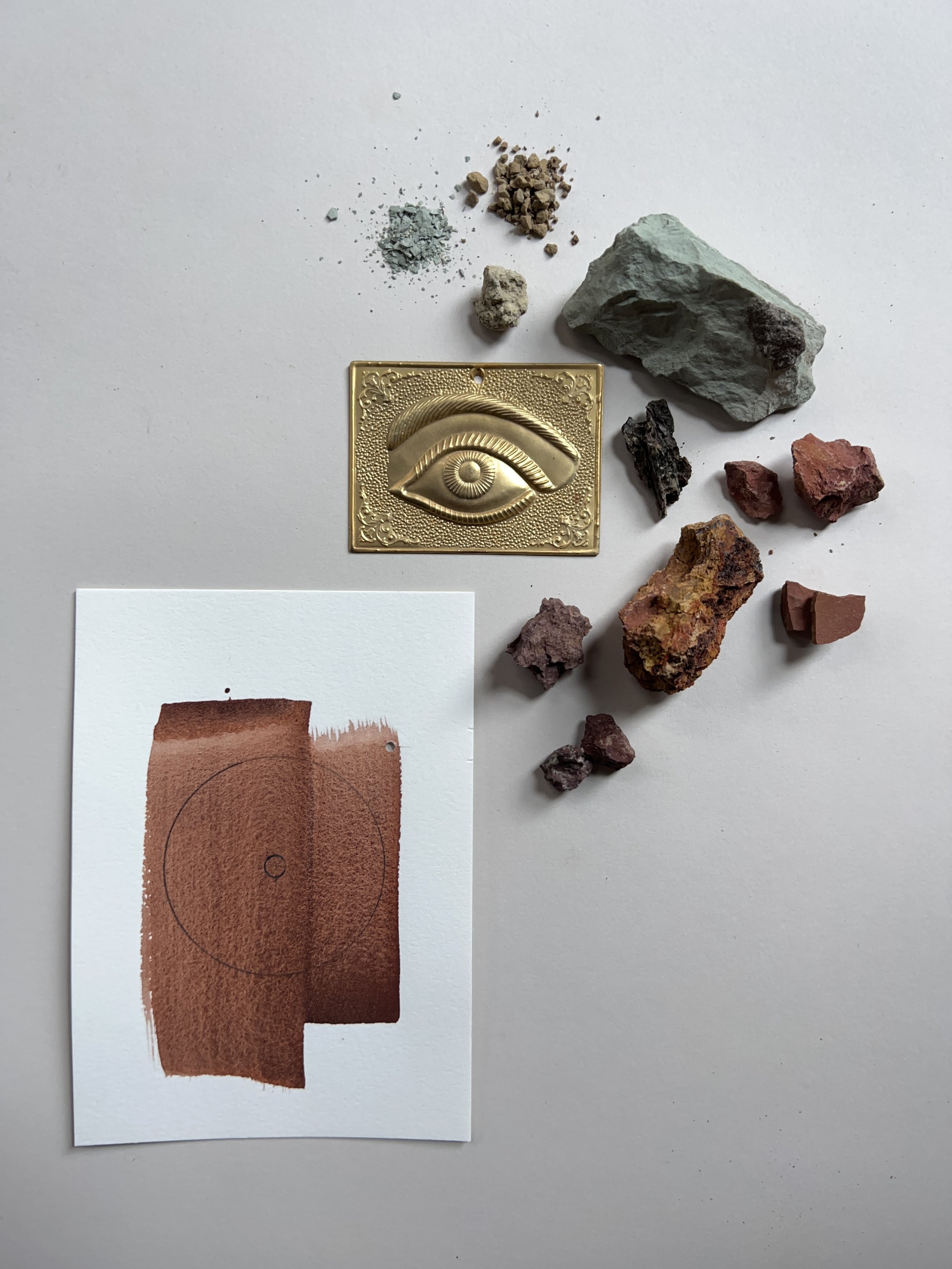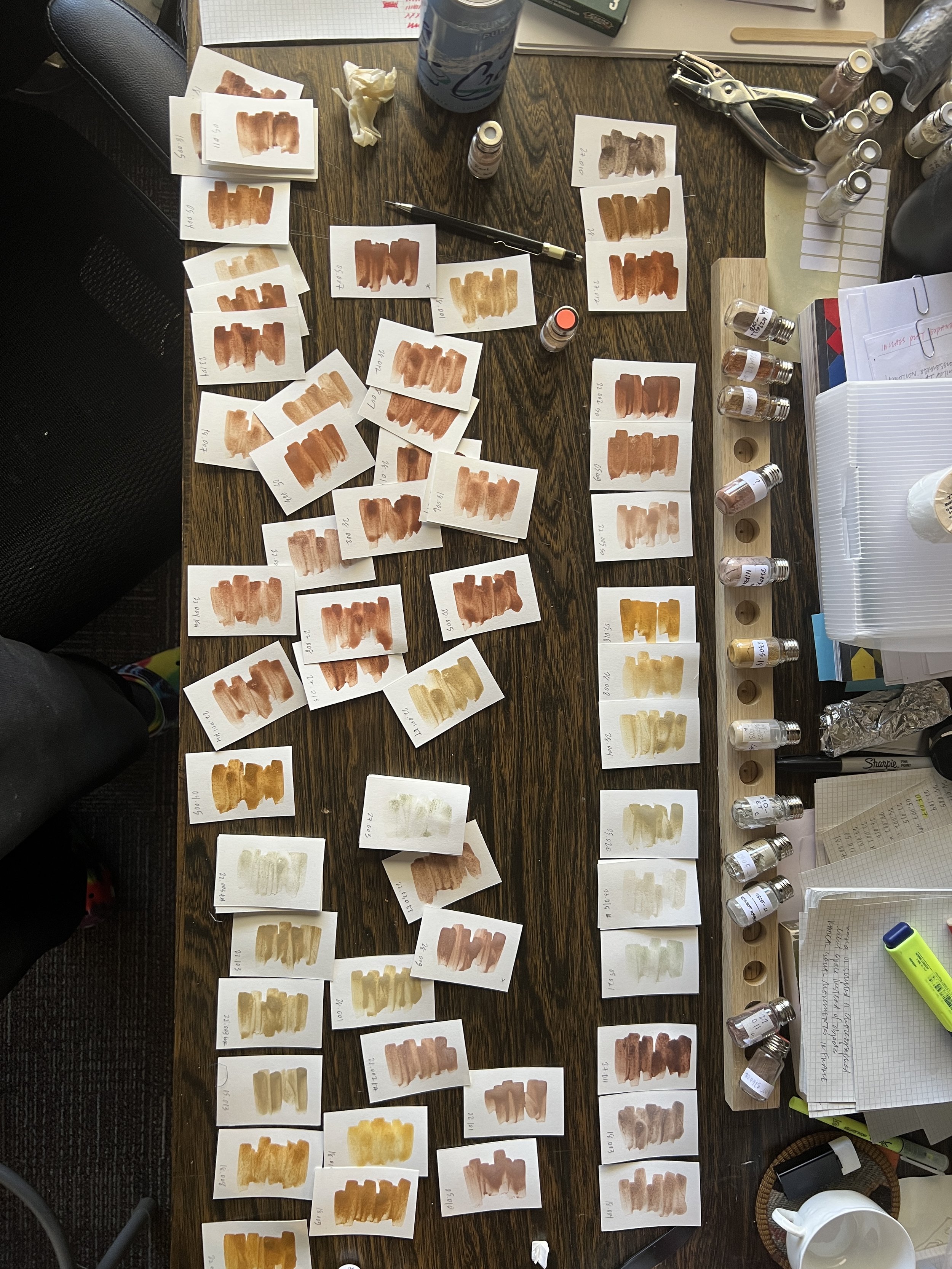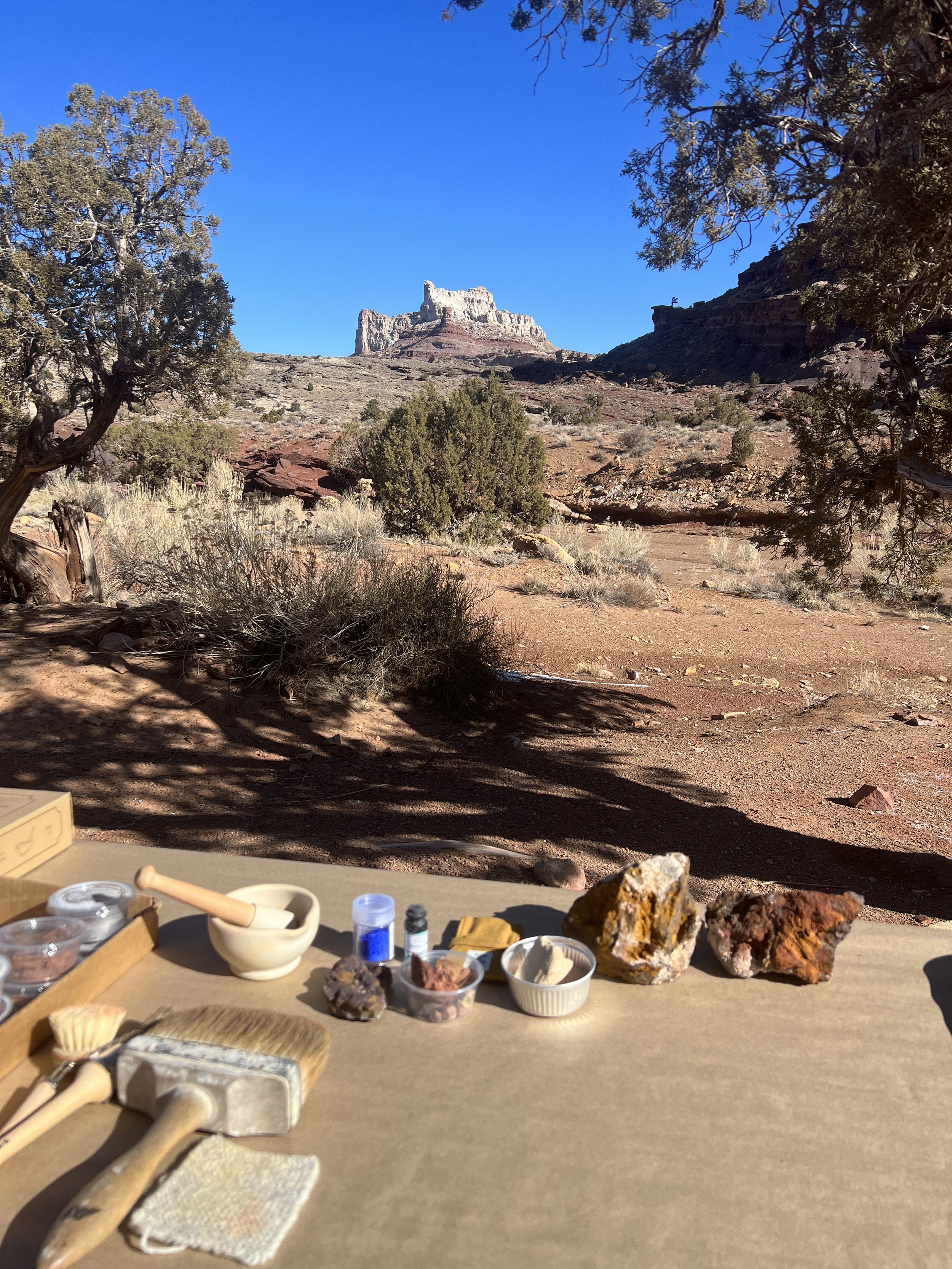ELPITHA TSOUTSOUNAKIS
2023
About the Fellow
Elpitha Tsoutsounakis (she/her) is a Cretan American designer, printer, and educator based in so-called Salt Lake City. She is a founding faculty and assistant professor in the Division of Multi-disciplinary Design at the University of Utah where she teaches visual strategy, research methods, and design studio. She completed a BS in architecture at the University of Utah and a Masters in architecture at the University of Texas at Austin. Her creative practice with Ochre engages design ethics and materiality through feminist, anti-colonial, and anti-capitalist relations to more-than-human worlds. Her work has been featured in the New York Times and Southwest Contemporary and she was named a 2023 Design Arts Fellow by the Utah State Division of Arts and Museums. Her work with the Field Studio Geontological Survey will be in the Time Space Existence exhibition hosted by the European Cultural Centre in Venice, Italy from May through November of 2023.
Header image: Elpitha Tsoutsounakis at Spring Summit 2022 in Green River, UT
About the Work
Field Studio Geontological Survey (FSGS) is a design research collective assembling and extending Ochre dimensions. FSGS is a bifurcation of practice established by the early land surveys of the mid-19th Century. Those proto-surveys were eventually formalized as the United States Geological Survey (USGS) by act of the United States Congress in 1879.[1] Since then, the USGS has mediated our understanding—and relations to—the nonhuman as raw material or natural resource to be extracted. This constructs dualisms in which humans survey/observe, catalog, map, and publish abstract values of terrestrial beings enclosing the agency of the more-than-human. FSGS engages the incommensurability that emerges from an assemblage practice that attempts to diverge from extraction logics.
FSGS is an anti-colonial, anti-capitalist, feminist practice—an alternative mapping of place in geological time through matter(s) of care.[2] This practice forms relations with geological terrestrial beings instead of positioning them as anonymous resource. It expands the world making capacity of the survey and map, atlas and archive. FSGS practice is carried out in three modes: 1. Field Operations—in which FSGS collaborators assemble Ochres from sites identified for their entanglements in extraction histories and practices. 2. Community Operations—gatherings to celebrate and educate. These operations invite the public to participate with Ochre during Ochre Office Hours, participatory demonstrations, and field trips. 3. Studio Operations—where ancient iron seabed meets modern steel press bed, Ochre bodies are extended to pigment and swatch dimensions and FSGS products are manufactured and published. From Ochre, color is material—grounding us back in relation with the earth. The question is not if color is abstract or natural, external or perceived—an Ochre color theory is relational beyond aesthetics.
[1] The Organic Act of the U.S. Geological Survey, U.S. Statutes at Large, v. 20, p. 394
[2] Puig de la Bellacasa, M. (2017). Matters of Care: Speculative Ethics in More Than Human Worlds. United States: University of Minnesota Press.
